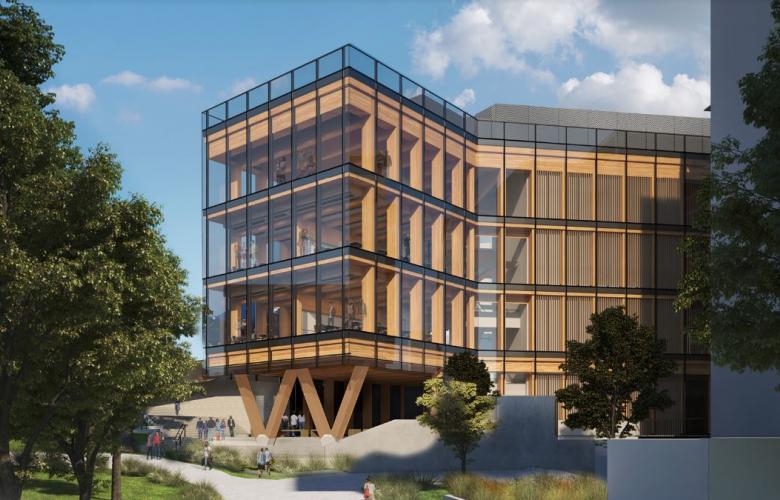New Clinical Education Building for Macquarie University Hospital
Contact
New Clinical Education Building for Macquarie University Hospital
Macquarie University’s Medicine and Health Sciences Faculty will deepen its links between learning, training, research and medical practice with its new four-storey timber Clinical Education Building, designed by Arup Australia.
A new clinical education building for the Macquarie University's Medicine and Health Sciences Faculty, alongside the Macquarie University Hospital, is a shining example of what can be achieved with a multi-disciplinary team to achieve high standards in sustainability and structural outcomes.
The building is a new four- storey timber structure, engineered by Arup and is a 'sequel' to the award-winning Macqurie University Incubator.
One of Australia’s youngest, yet most innovative medical faculties – Macquarie University’s Medicine and Health Sciences Faculty – will deepen its links between learning, training, research and medical practice with its new four-storey timber Clinical Education Building alongside the Macquarie University Hospital.
The multidisciplinary team, comprising more than 15 disciplines, worked alongside architecture and design practice Architectus to ensure exemplar sustainability and structural outcomes and to realise the rapid construction programme.
In keeping with Macquarie University’s Campus Master Plan which emphasises sustainable buildings, cutting-edge facilities and industry collaboration, the innovative timber construction will house multiple Harvard Case Study theatres, a contemporary lecture theatre and team-based learning spaces.
Its eye-catching glass façade will let in maximum light on the narrow site, creating a visible link from learning spaces to the Hospital – reaffirming the vital connection between education, discovery and health.
Responding to its surroundings, the new facility will connect pedestrians from Innovation Road to the campus’ main walkway, ‘Wally’s Walk’ via landscaped and greenery-lined paths.
The building is designed so that passers-by are also encouraged to look in at the learning in action.
Set to open in 2020, the Clinical Education Building will provide students and staff an exceptional, dynamic and flexible place to work and study – setting the stage for future health innovations and medical breakthroughs.
Breaking down the process
Working within a BIM environment, the Arup team produced a detailed model which was imported by the contractor in the fabrication software allowing timber to be factory pre-cut for swift assembly on site – minimising construction impact on Macquarie’s campus environment.
With cross laminated timber (CLT) walls, and CLT floors supported by a 2.4m by 15m grid of glued laminated timber (glulam) columns and beams, there were multiple structural considerations at play.
Arup’s structural engineers used CLT floors and walls for lateral stability and designed connections for strength, durability, appearance and ease of assembly.
To showcase the internal timber surfaces and maintain the floor plate’s open aesthetic, Arup’s design enclosed the building services within the structure.
This required a precise multidisciplinary coordination of penetrations in the glulam beams and where possible, reducing and grouping services to maximise the strength of the structure.
The thermal, fire and acoustic treatments were simultaneously considered to optimise safety and acoustic qualities without detracting from the architectural intent.
A defining ‘W’ shaped Victorian Ash hardwood glulam column formation at the entry to the building is an important feature supporting the southern cantilevered floor and column-free façade above Level 1.
The ‘W’ form enables unobstructed views from inside and out and creates a spacious, welcoming foyer as well as supplementing the lateral stability provided by the CLT core.
Similar to this:
Crown Group designs inter-generational living concept for Sydney’s eastern residents
Expansion of Thai Forestias project announced
Sydney's Central Station set for 'vibrant and exciting' transformation










